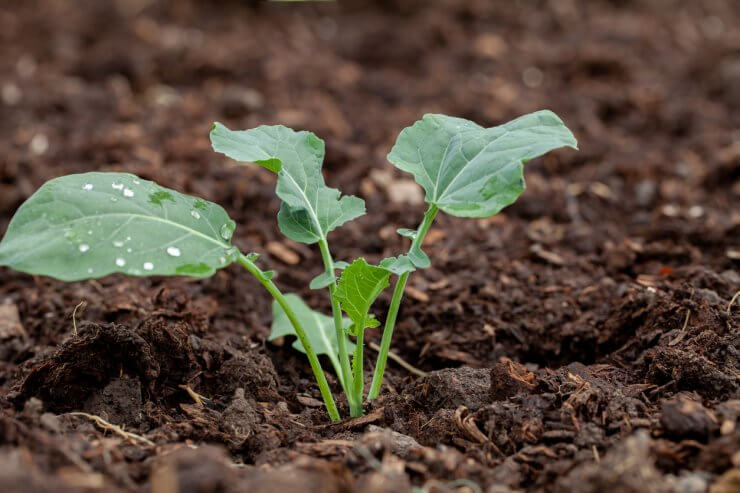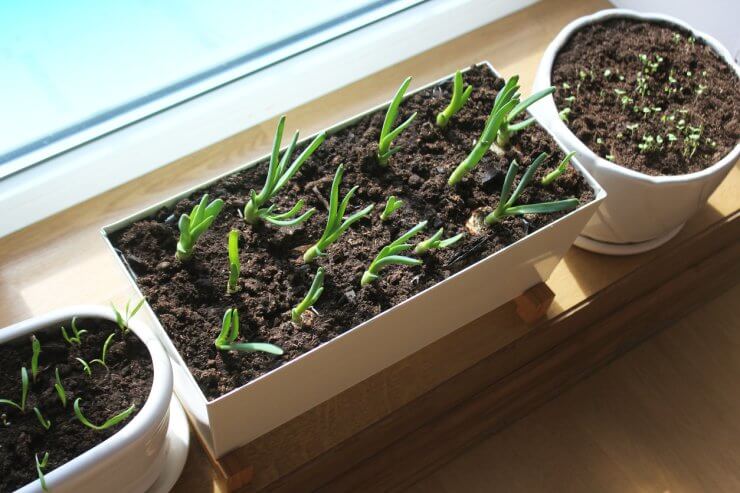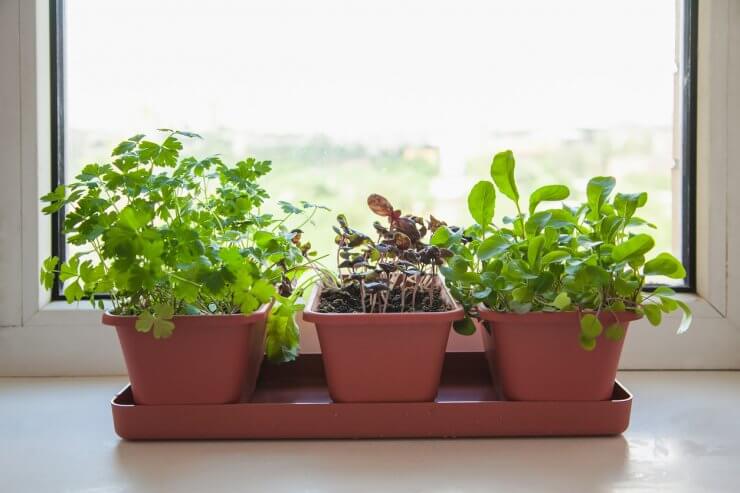
January in zones 7-8 brings average temperatures ranging from 20°F to 40°F (-6°C to 4°C), with occasional dips below freezing and the odd warm spell. While it’s not prime planting season outdoors, your relatively moderate winters offer opportunities that colder zones can only dream about. Plus, it’s the perfect time to start seeds indoors for spring planting while planning your garden’s next productive season.
Indoor Seed Starting
January is the ideal time to start many of your spring vegetables indoors, particularly those that need a longer growing season to reach maturity.

Broccoli plant growing in the garden soil
Brassicas
Brassicas like broccoli, cauliflower, and cabbage should be at the top of your list – these crops need 10-12 weeks of growth before they can be transplanted into the spring garden. Starting them in January ensures they’ll be strong and ready to plant when the soil warms. Give them plenty of light – a sunny south-facing window can work, but grow lights are even better. Keep them under lights for 14-16 hours daily, maintaining temperatures around 65-70°F for optimal growth.

Onions / Alliums
The onion family also deserves your attention this month. Onions, leeks, and shallots started from seed in January will have time to develop into sturdy plants before spring transplanting. These alliums are heavy feeders and need a long season to develop properly. Start them in deep containers that allow their roots to develop fully, and don’t worry if you need to trim their tops back to about 3 inches if they get too tall – this won’t harm the plants and can actually encourage stronger root growth.

Perennial Herbs
Perennial herbs started in January will be well-established by the time spring arrives. While herbs like parsley, oregano, thyme, and sage germinate slowly, your patience will be rewarded with sturdy plants ready for your garden or containers. Keep the soil surface consistently moist until germination, and don’t be discouraged if it takes a few weeks – some herbs are notoriously slow to sprout but will thrive once they get going.
Protected Outdoor Growing
If you’re fortunate enough to have a cold frame or hoop house, January doesn’t have to mean the end of fresh vegetables. Cold frames create a microclimate that can be up to 15 degrees warmer than outside temperatures, allowing you to grow hardy greens like spinach, mâche, and kale even in the depths of winter. The key to success is vigilant temperature monitoring – on sunny days, even in January, temperatures inside can soar, requiring venting to prevent plant stress.
Root crops can also succeed in protected growing spaces during January. Quick-growing radishes provide harvest satisfaction during winter’s darkest days, while carrots and turnips steadily develop beneath the soil. The soil in your cold frame will stay workable even when the open garden is frozen solid, allowing you to succession plant for continuous harvests.
Indoor Food Production
Don’t let limited outdoor growing space discourage you – January is perfect for indoor food production projects.
Microgreens can transform a sunny windowsill into a productive growing space, providing fresh nutrients throughout winter. These tiny powerhouses are ready to harvest in as little as 7-10 days for fast-growing varieties like radish and mustard, or 14-21 days for pea shoots and sunflower shoots. One flat of microgreens can provide several salads worth of fresh greens, making them a worthwhile winter project.
Sprouts are even simpler to grow than microgreens, requiring no soil at all. Using nothing more than a jar, some cheesecloth, and seeds, you can produce fresh, nutrient-rich sprouts year-round. Alfalfa, mung beans, broccoli, and radish seeds all make excellent sprouts, and the entire process takes less than a week from start to finish. The key to success is good air circulation and regular rinsing – twice daily keeps the sprouts fresh and prevents any unwanted mold growth.
January Maintenance and Planning
While active growing might be limited, January provides the perfect opportunity to prepare for the upcoming season. Use this quieter time to maintain your garden tools – sharpen pruners, oil wooden handles, and organize your seed-starting supplies. These tasks might seem mundane, but having well-maintained tools ready when spring arrives will make your garden work much more enjoyable.
Fruit tree care is particularly important during January. You have a short window of dormancy, and this may be it. The trees’ dormant state makes this the ideal time for pruning and structural work. On mild days, take the time to inspect your fruit trees, remove any dead or crossing branches, and apply dormant oil spray to control overwintering pests. This is also the perfect time to remove any remaining mummified fruit that could harbor disease organisms.
Soil preparation can continue even in January, weather permitting. On milder days when the ground isn’t frozen, add organic matter to your beds and turn your compost pile. If you haven’t done a soil test recently, January is a good time to collect samples and send them off for analysis. This gives you plenty of time to amend your soil before spring planting begins.
Looking ahead, use January’s indoor time to study seed catalogs, take online gardening courses, and plan new garden projects. Start a garden journal to track your successes and lessons learned. Join local gardening groups – many meet during winter months to share knowledge and plan community projects.
Remember, while January might seem quiet in the garden, it’s actually a crucial month for preparation and indoor growing. Your zone 7-8 garden has the advantage of relatively moderate winters, making protected growing possible while still enjoying enough of a cold period for proper fruit tree dormancy. Use this time wisely, and you’ll be ready for a productive spring season ahead.
What ambitious garden projects are you planning this January? Whether you’re starting your first seeds or planning a complete garden renovation, now’s the time to dream big and plan for success!


 Previous
Previous

